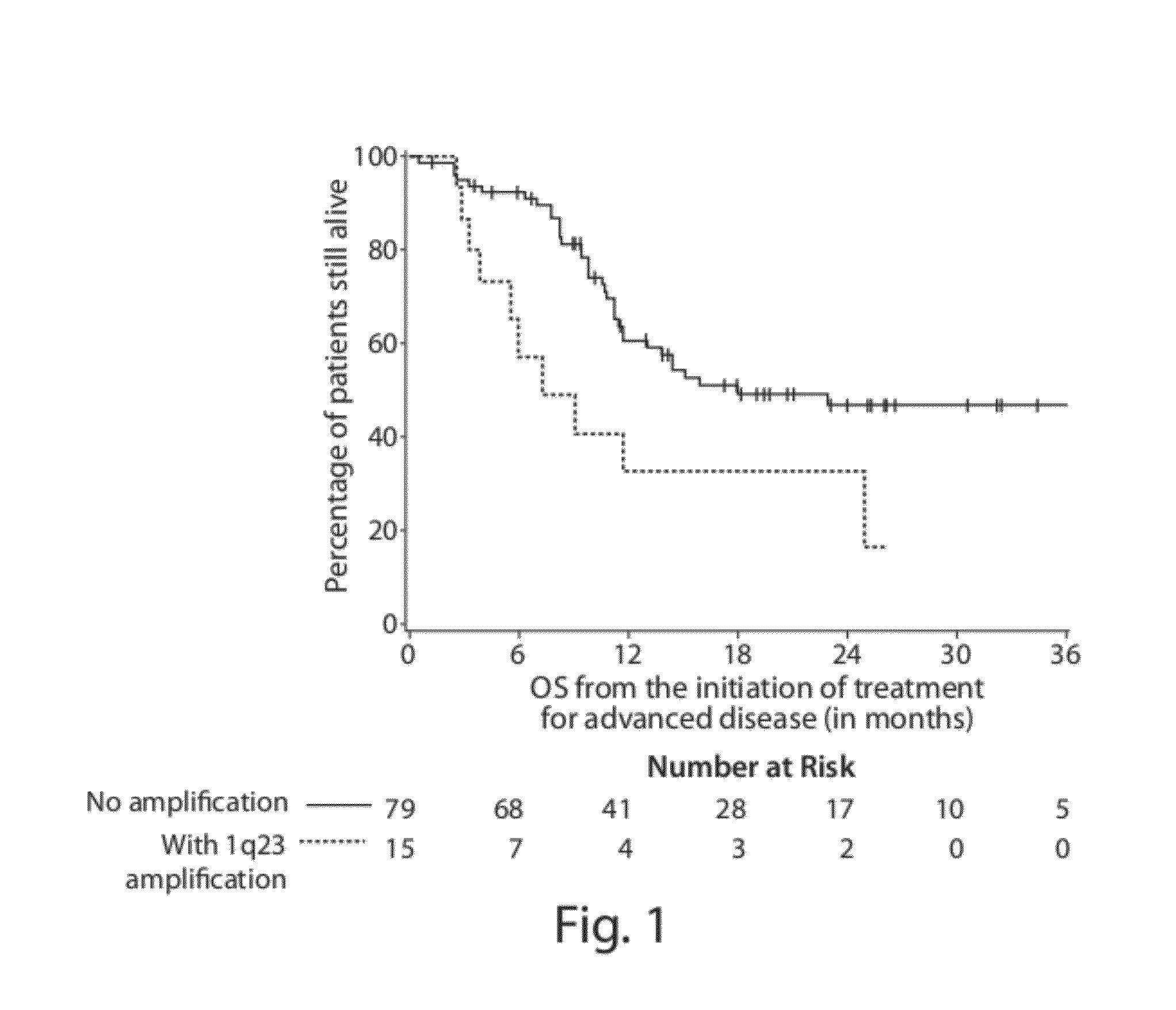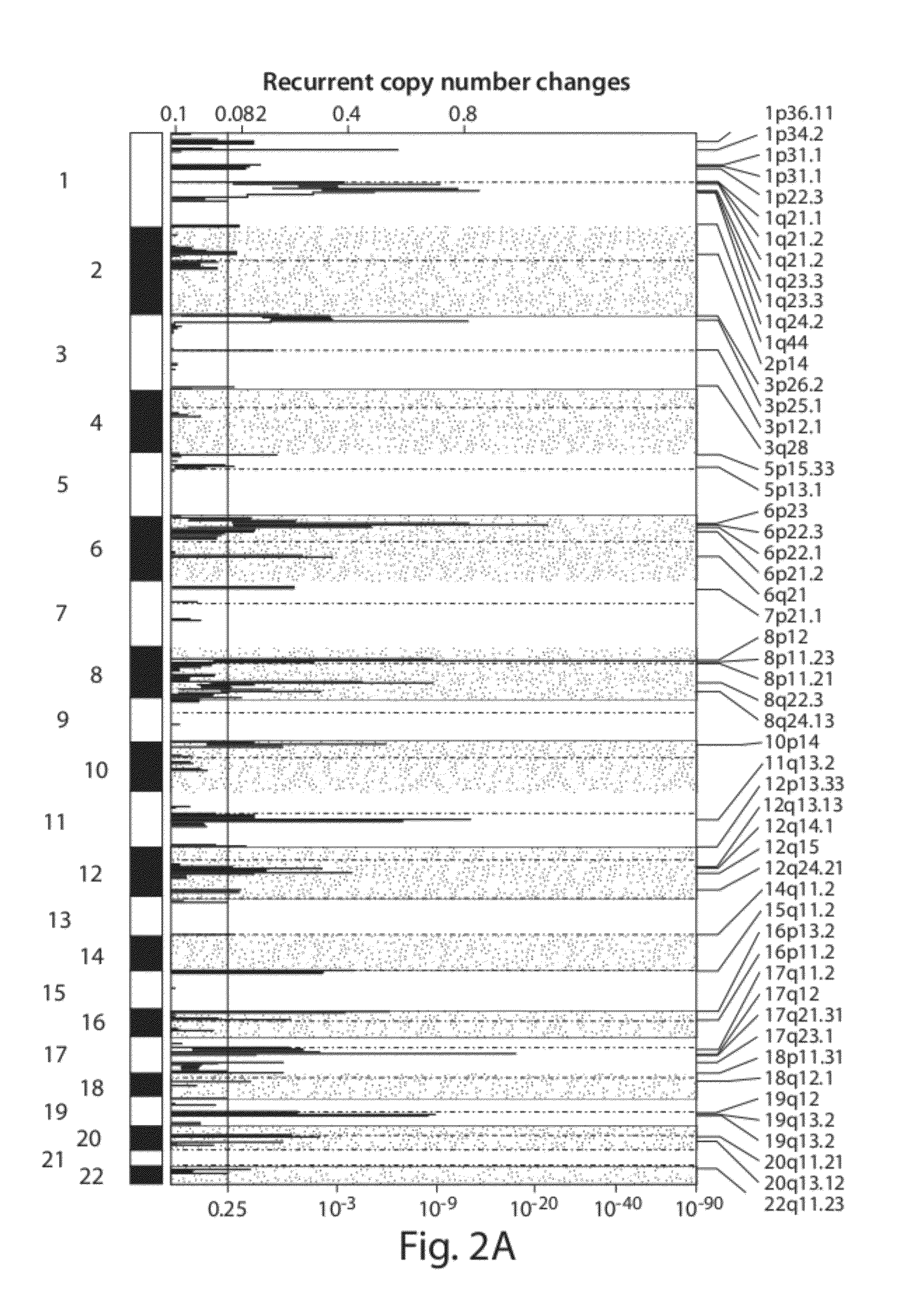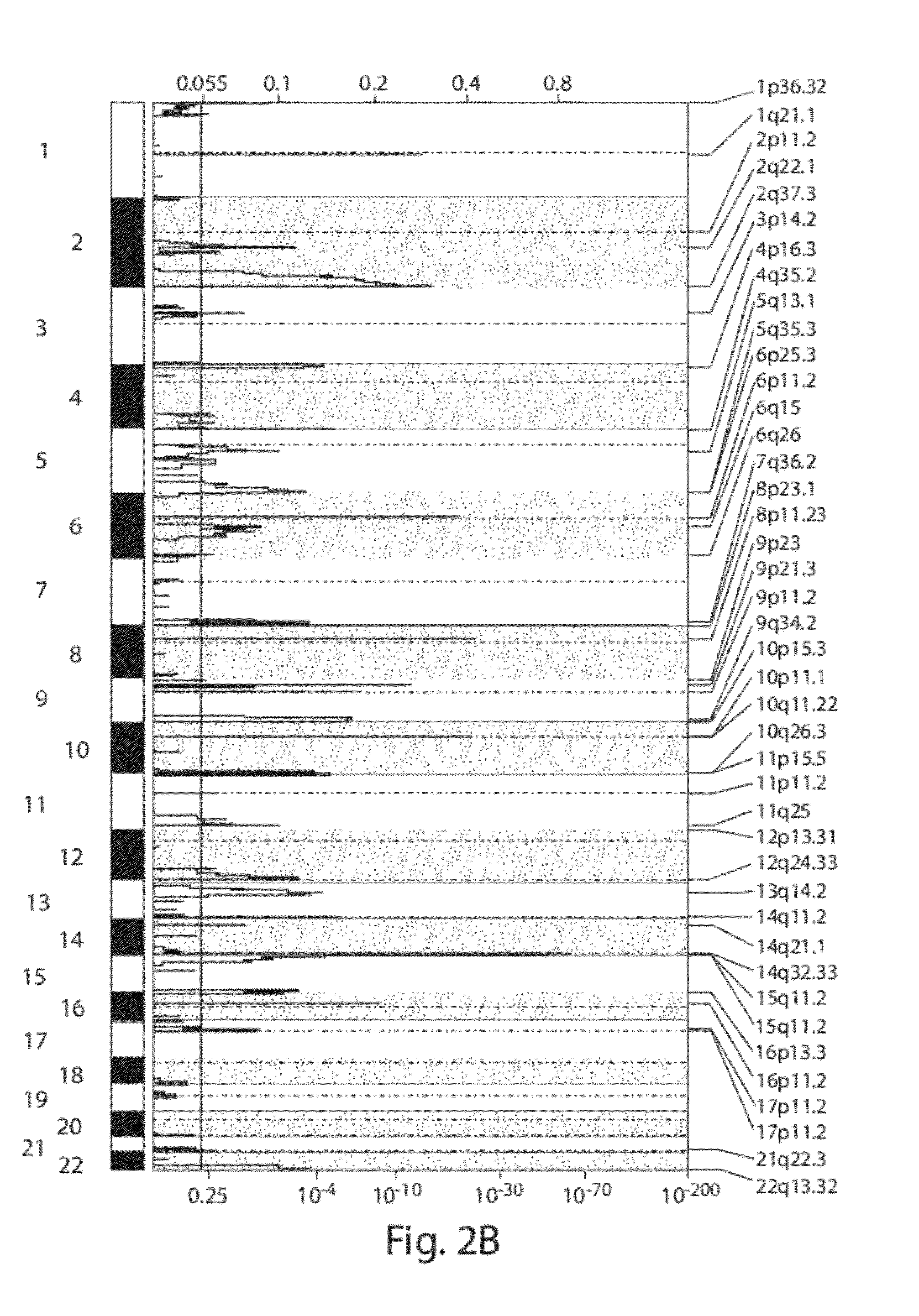Chromosome copy number gain as a biomarker of urothelial carcinoma lethality
a urothelial carcinoma and biomarker technology, applied in the field of chromosome copy number gain as a biomarker of urothelial carcinoma lethality, can solve the problems of not being able to advance the standard of care for uc, no fda-approved second-line treatment, and no clear molecular understanding of what defines the lethal phenotype of uc. , to achieve the effect of improving the survival rate, reducing the risk of mortality ratio ratio
- Summary
- Abstract
- Description
- Claims
- Application Information
AI Technical Summary
Benefits of technology
Problems solved by technology
Method used
Image
Examples
example 1
[0052]A cohort of 94 patients was identified. These patients all developed metastatic UC, the lethal phenotype of this cancer for which they subsequently received platinum-based combination chemotherapy. Clinical data was tabulated in collaboration with the study biostatistician. Overall survival data, defined as the time from start of chemotherapy for metastatic disease, was collected on these patients (Discovery cohort, Table 1). Tumor-bearing formalin-fixed, paraffin embedded (FFPE) tissue blocks from transurethral resection (TUR) or cystectomy specimens were evaluated by a single UC pathologist to identify malignant tissue. Multiple 0.6 mm cores were taken from tumor tissue and genomic DNA and total RNA was extracted. Tissue microarrays were also constructed from this cohort. Using the genomic DNA, high resolution CGH arrays were performed using Agilent 4×180 k chips with an average resolution of 13 kb to assess copy number alterations. Gain and Loss Analysis of DNA (GLAD) 16 wa...
example 2
[0053]Median overall survival for the Spanish aCGH, Greek FISH, BW / DF FISH, and BW / DF MIP are 15.1, 18.0, 12.2 and 10.5 months, respectively, and median follow-up for these cohorts was 23.1, 50.1, 131, and 60.9 months. There were significant differences between the cohorts in the percentage of patients with visceral metastases and poor performance status. Table 3 summarizes patient characteristics in all three cohorts.
[0054]First the GISTIC algorithm was applied to the data to identify regions of recurrent copy number alteration. This approach identified 95 focal and 21 broad (>50% of the chromosome arm) events in the Spanish cohort (FIG. 2A-B) and 91 focal and 16 broad events in the BW / DF cohort (FIG. 2C-D). The results of the broad alteration analysis were largely consistent with the literature, with frequent losses of chromosomes 5q (43%), 8p (69%), 9 (p: 48%; q: 41%), 10q (41%), 11p (49%), 17p (51%), and 22q (40%) and recurrent gains of chromosomes 3q (46%), 5p (48%), 8q (48%), ...
PUM
| Property | Measurement | Unit |
|---|---|---|
| Time | aaaaa | aaaaa |
| Time | aaaaa | aaaaa |
Abstract
Description
Claims
Application Information
 Login to View More
Login to View More - R&D
- Intellectual Property
- Life Sciences
- Materials
- Tech Scout
- Unparalleled Data Quality
- Higher Quality Content
- 60% Fewer Hallucinations
Browse by: Latest US Patents, China's latest patents, Technical Efficacy Thesaurus, Application Domain, Technology Topic, Popular Technical Reports.
© 2025 PatSnap. All rights reserved.Legal|Privacy policy|Modern Slavery Act Transparency Statement|Sitemap|About US| Contact US: help@patsnap.com



